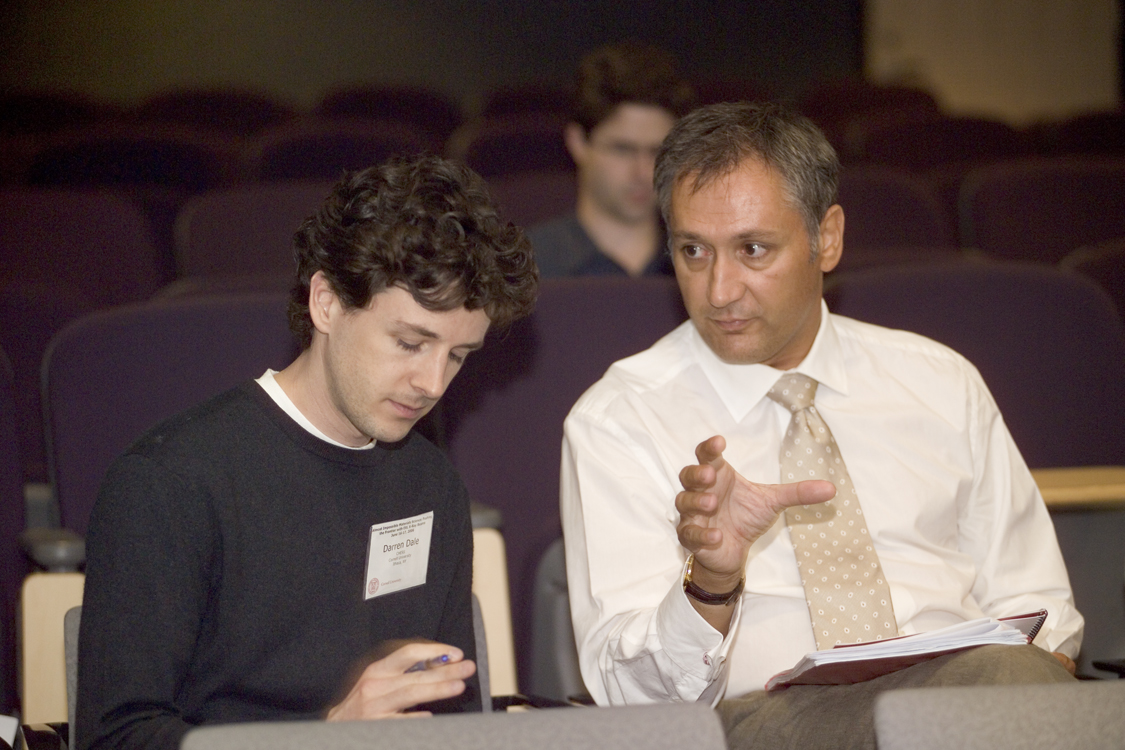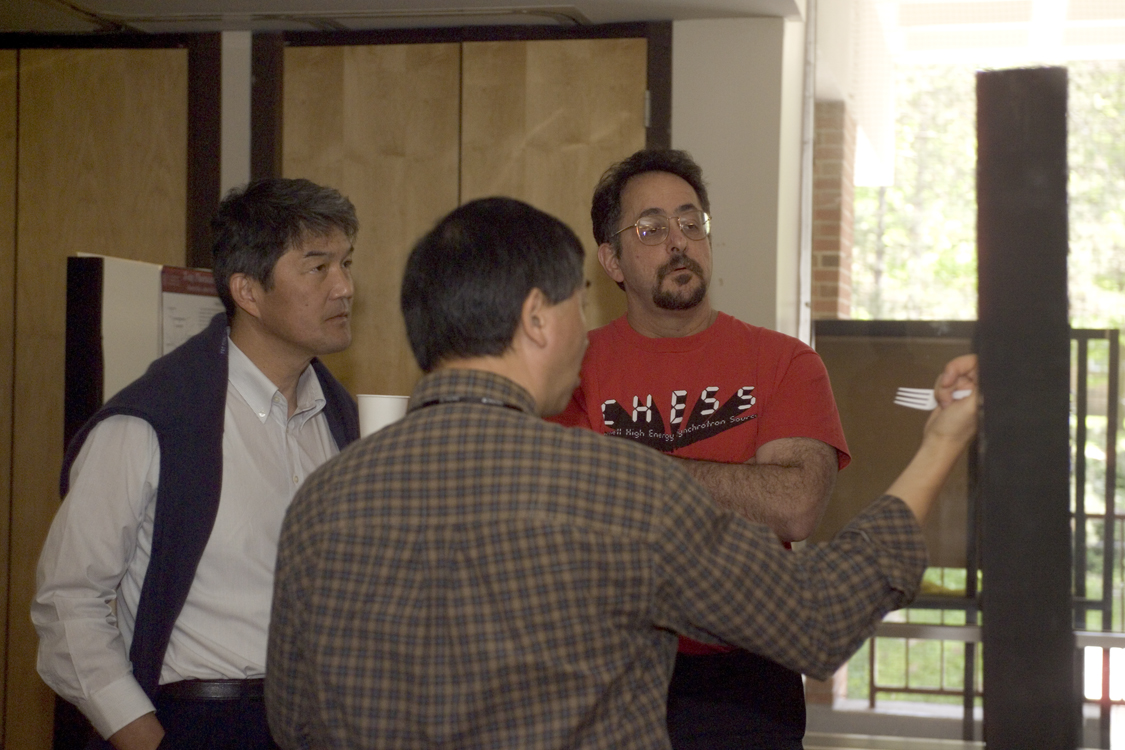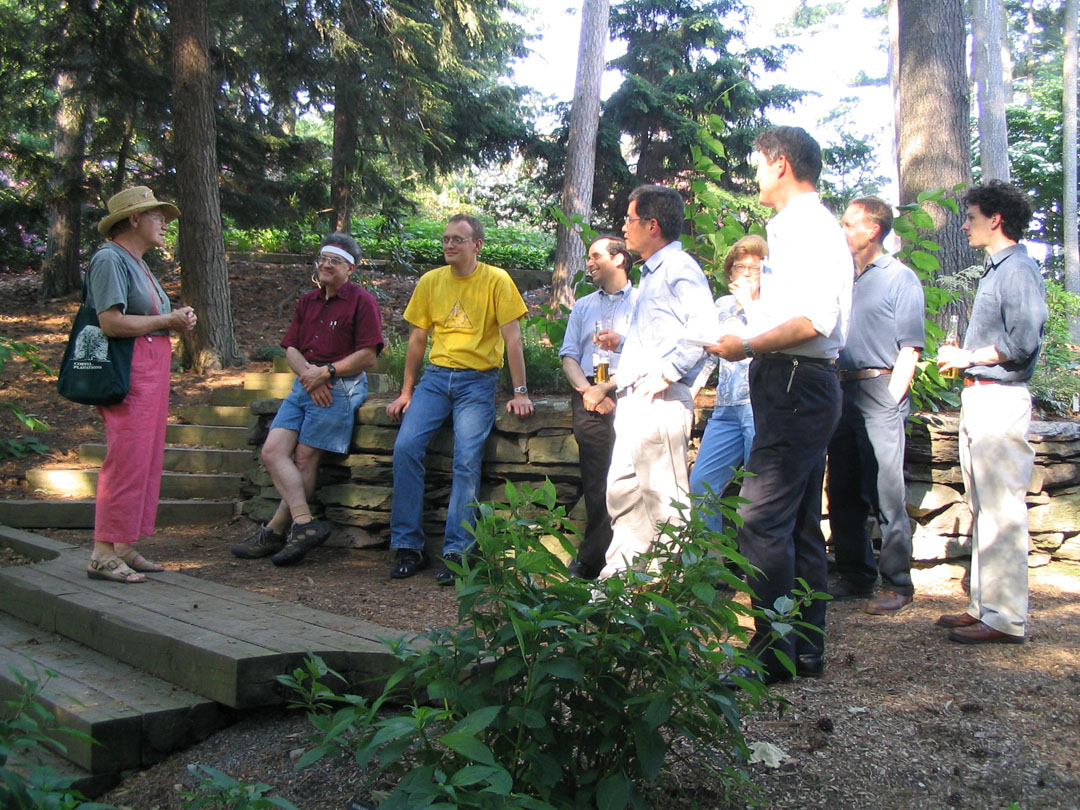X-RAY RUNS: Apply for Beamtime
2017 Nov 1 - Dec 21
2018 Feb 7 - Apr 3
2018 Proposal/BTR deadline: 12/1/17
2018 Apr 11 - Jun 4
2018 Proposal/BTR deadline: 2/1/18
Contact: E. Fontes (ef11@cornell.edu) and M. Szebenyi (dms35@cornell.edu)
Materials science, soft matter, high-pressure, biology, the ultrafast and nanobeams were topics of discussion for 96 invited speakers and 420 participants from around the world over a two-week period this past June at Cornell University. “Give us ‘one good idea’ for an experiment enabled by an ERL” was the agenda set for each participant by Sol Gruner, the John L. Wetherill Professor of Physics and director of CHESS, the Cornell High Energy Synchrotron Source. ERL stands for Energy Recovery Linac, a new type of particle accelerator being designed at Cornell to create new scientific capabilities with nanometer-sized x-ray beams and pulses only femtoseconds long. The ERL will eventually replace the existing storage ring as an upgrade to the CHESS facility.

Darren Dale (left, CHESS) with Philip
Willmott (Swiss Light Source).
Photo: Kevin P.
Stearns, CU Photography
“Bold, adventurous ideas” were asked for by Neil Ashcroft as he kicked off the first of six independent workshops. Ashcroft, the Horace White Professor of Physics at Cornell, reminisced about more than a half century of forefront accelerator development at Cornell while looking forward to proposed construction of a high-energy ERL x-ray source. The audience was challenged to expose “exciting science happening now” and “what future excitement will be unleashed by the ERL?”
One exciting area is diffraction imaging. Being a fully coherent source of high energy x-rays, the ERL will allow studies of 3-dimensional objects in unprecedented detail. In the biology workshop, Dr. Chris Jacobsen, of the National Synchrotron Light Source, described how lensless diffraction microscopy could be used to create high resolution pictures of biological specimens, including whole cells. Dr. Gene Ice, from the Oak Ridge National Laboratory, spoke in the nanobeam workshop on using diffraction microscopy to study buried structures in nano-sized volumes of materials such as alloys, crystals, and nanostructures. These experiments will reveal how crystals grow, how cracks propagate, how the microstructure of materials change with time – important information needed to develop novel materials for the future.
During the high-pressure workshop Dr. Paul Loubeyre (Université Paris) was enthusiastic about working with hydrogen, the lightest of all elements and one of the hardest to study. “The ultimate goal is to determine the structure of metallic hydrogen. That should certainly require a significant jump in the x-ray brightness and source size. Such a beam could be obtained by an ERL…” Scientists currently study the dynamics of liquid oxygen and water under pressure, but going to higher pressures will require much smaller specimens, for which it might take more than an hour to collect a single x-ray spectrum with current facilities. Faster data collection and much higher resolution are needed to advance our knowledge of water and other ubiquitous materials. New results in these areas will have a huge impact on our understanding of geology and earth and planetary sciences.

Examining a poster are Hiroshi Kawata (KEK Japan, Left)
with Qun Shen (Advanced Photon Source, center) and Ken Finkelstein
(CHESS)
Photo: Kevin P. Stearns, CU Photography
In the materials workshop Dr. Eric Isaacs, director of the Center for Nanoscale Materials at Argonne National Laboratory, surveyed the field of nanofabricated materials and pointed out that much more needs to be learned about mesoscale systems, melting and solidification processes, dynamics of domain walls and magnetic phenomena on the nanoscale. With the ERL as a tool, an entirely new regime of faster measurements on smaller systems would lead to new materials and ultimately new technologies. Faster electronics, including quantum computing and higher density magnetic storage, and more efficient alternative fuel generators are some of the advances on the horizon.
More exciting questions and possibilities came forth in each of the workshops as the participants started to realize the potential impact of an ERL. Can an x-ray beam focus down to the size of an atom? Will we be able to record very fast physical and chemical reactions, such as molecules vibrating or the all-important process of photosynthesis? How will x-ray damage limit imaging of biological cells? Will we be able to detect fluorescence light given off by a single atom? Such musing led to profound questions about future applications. With single atom fluorescence, will environmental scientists be able to track heavy metal contamination inside bacteria, plants and cells from higher organisms? If we fully understand photosynthesis, could artificial chemical photosystems help solve the worlds’ energy needs?
The major concern of the participants was not “if” the machine should be built, but rather if there were any way to get it on-line more quickly. The excitement of the participants made clear that a full-scale ERL machine will open many new forefront areas in physics, chemistry, biology, and materials research. An ERL would make Cornell a unique center for x-ray based science for decades to come.

Attendees at the materials workshop relax with dinner and a tour at the
Cornell Plantations.
